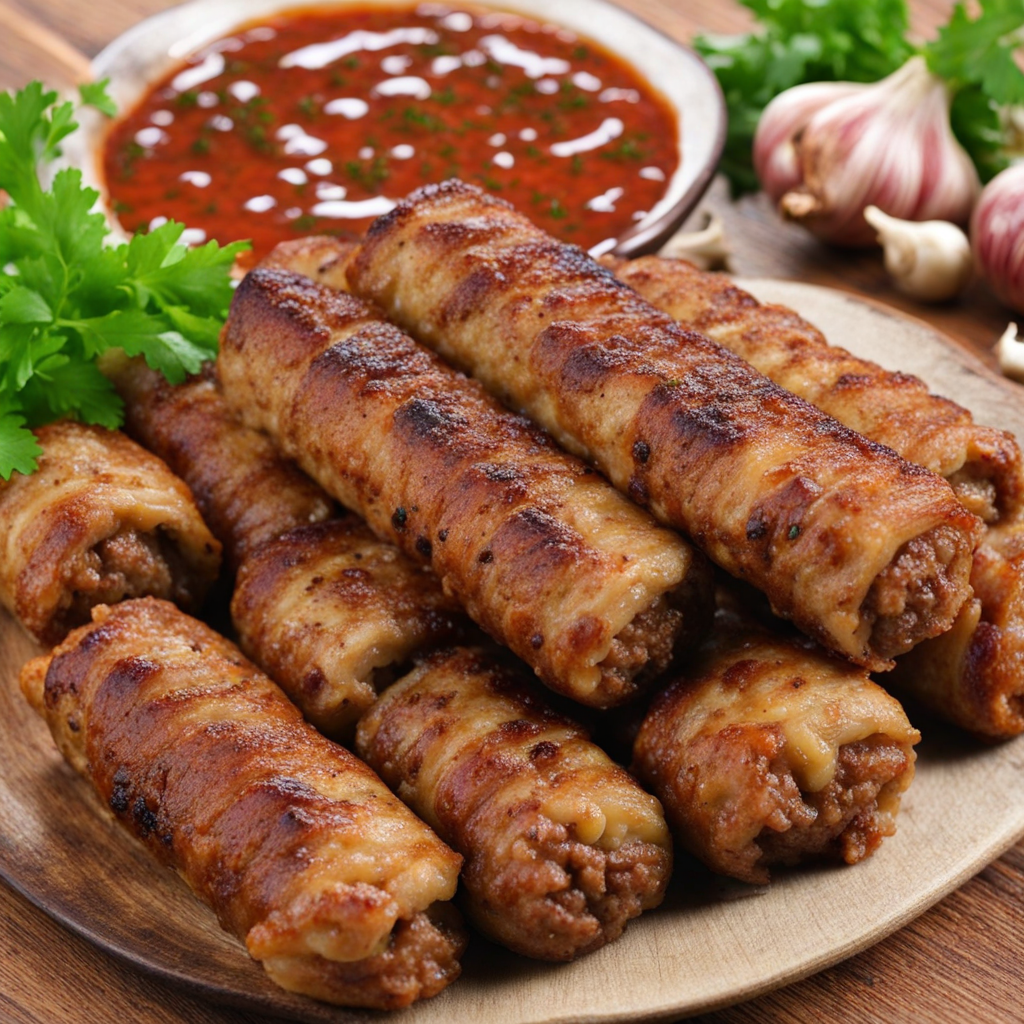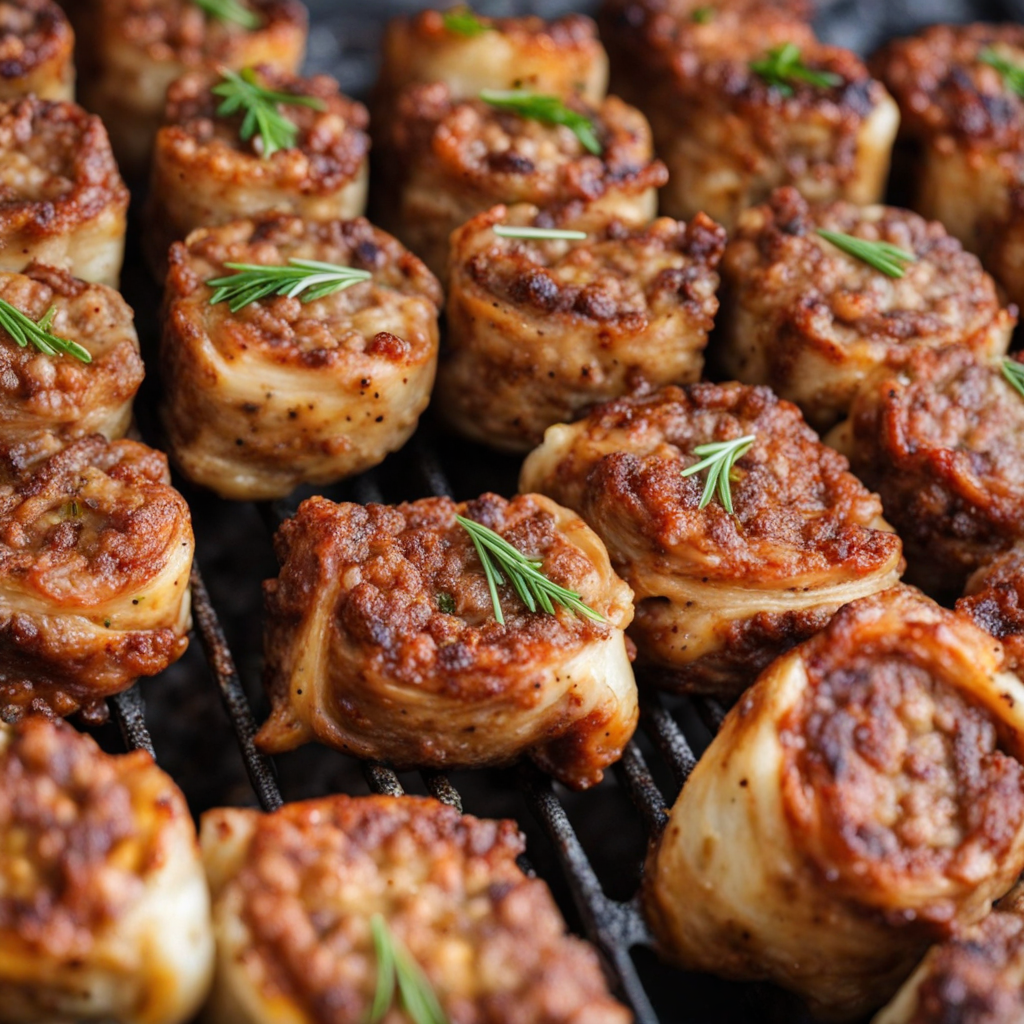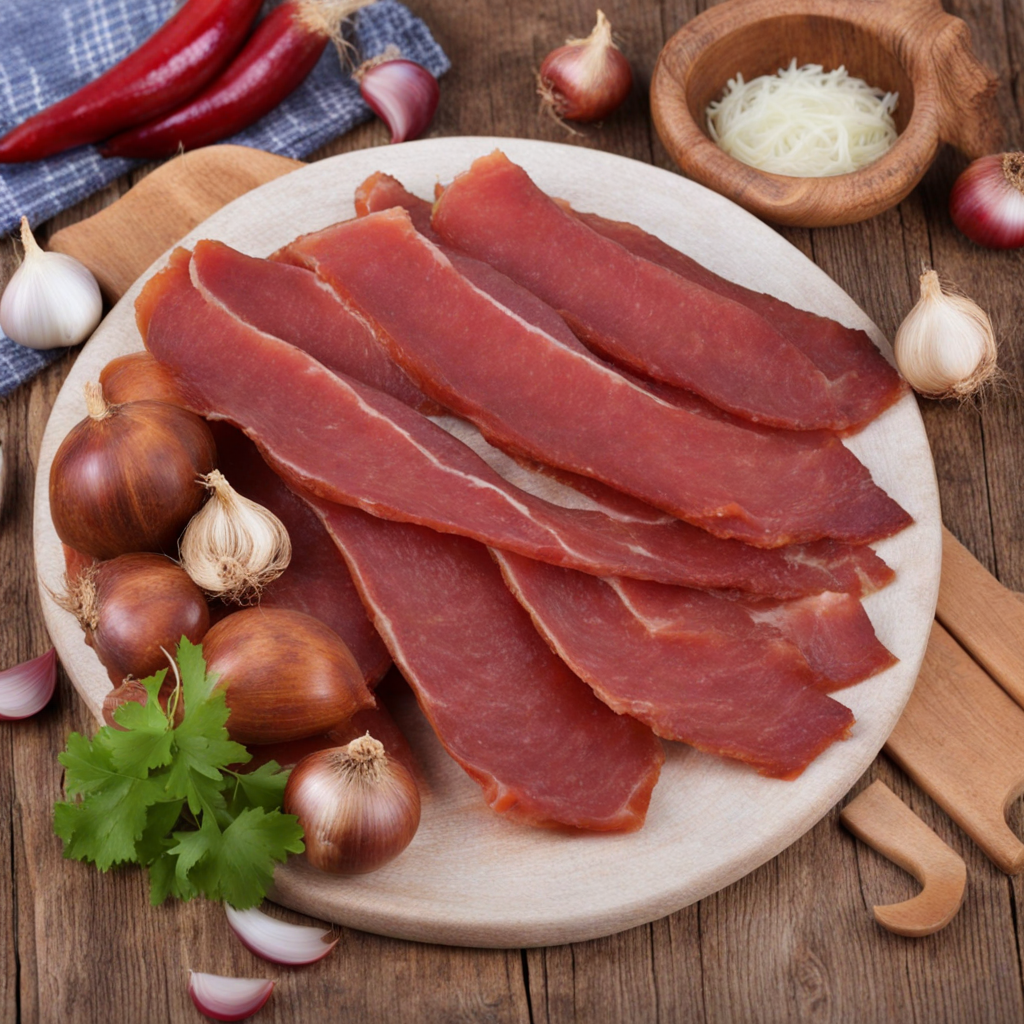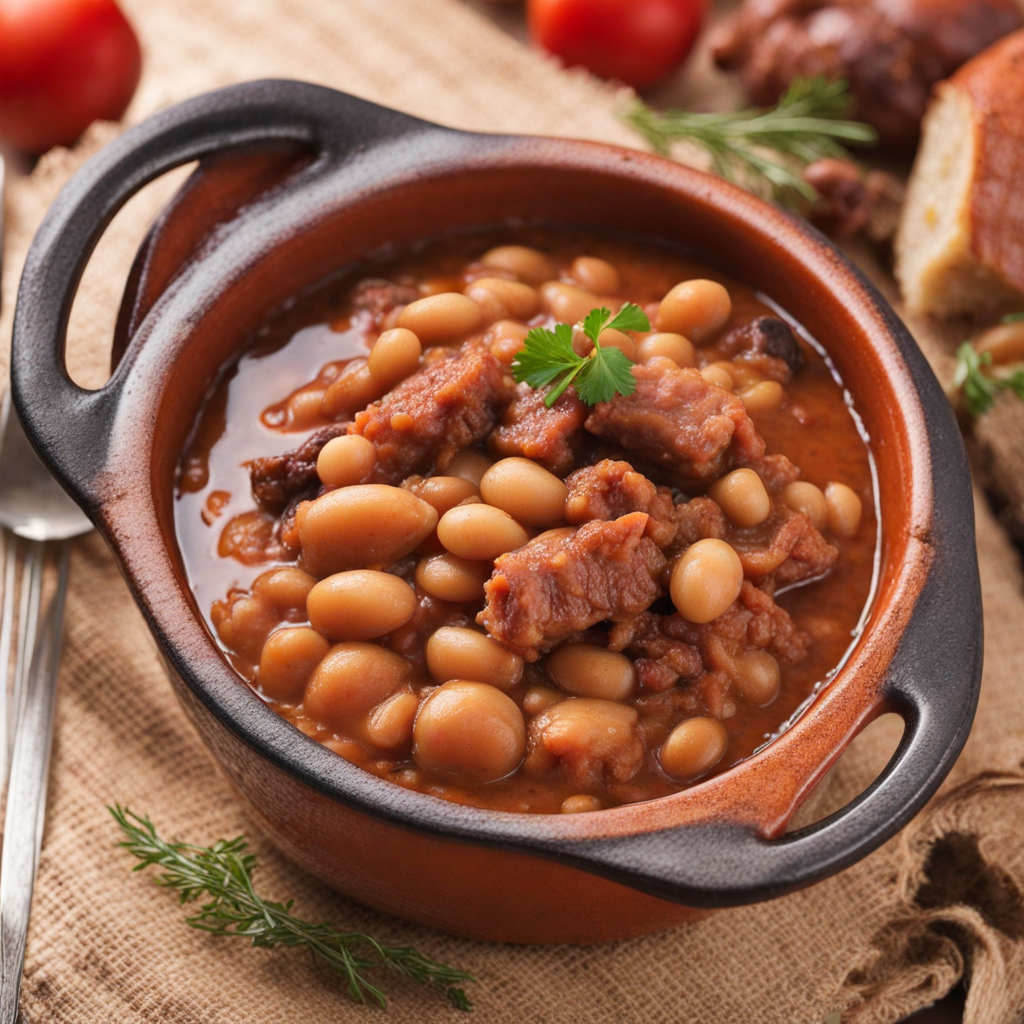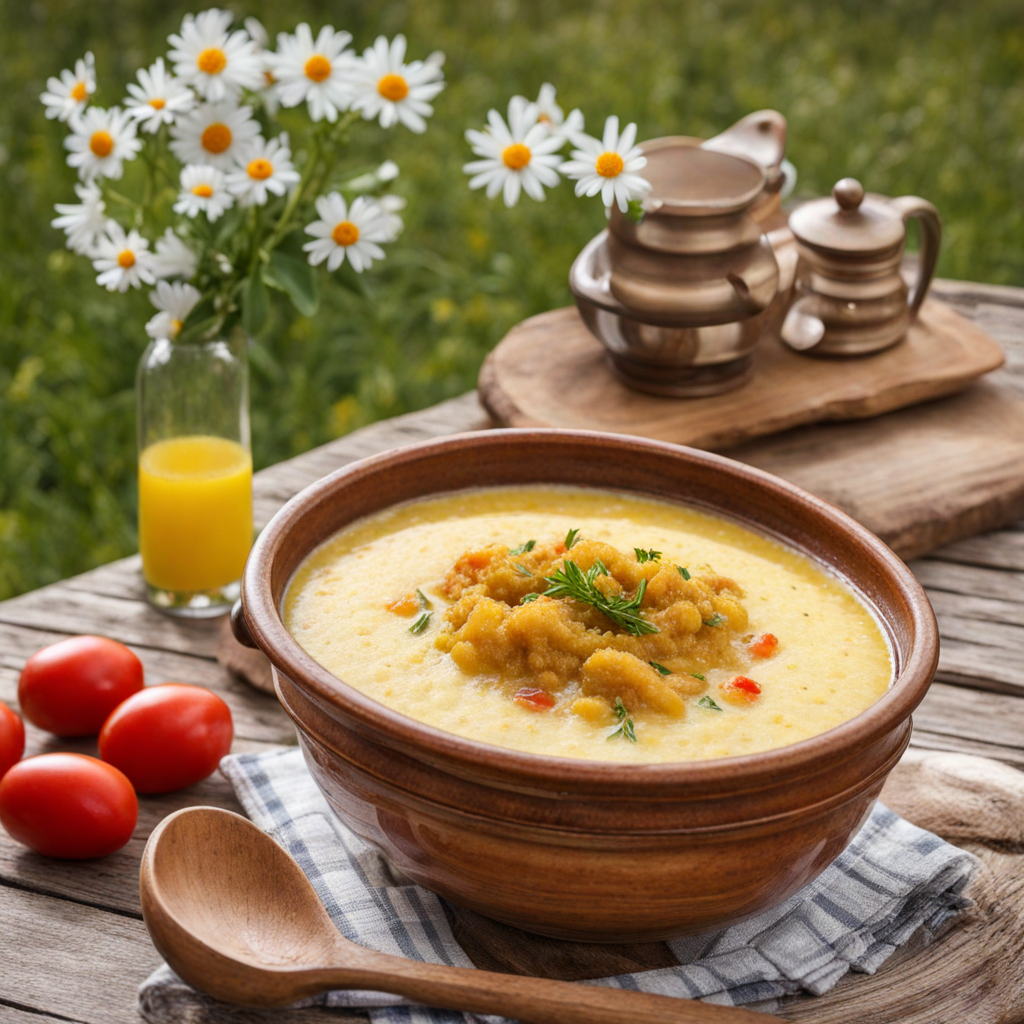Mititei
Mititei, also known as "mici," are a beloved Romanian street food that embodies the heart and soul of traditional Romanian cuisine. These small, skinless sausages are made from a mixture of beef, pork, and lamb, seasoned with a special blend of spices that typically includes garlic, thyme, and black pepper. The meat is finely minced and combined with a touch of baking soda and broth, giving mititei their distinctive juicy texture and flavor, while the spices create an aromatic profile that tantalizes the senses. Grilled to perfection, these sausages are characterized by their smoky aroma and appealing charred exterior, making them a popular choice at outdoor barbecues and summer festivals. When served, mititei are often accompanied by a side of mustard and fresh bread, allowing diners to savor the bold flavors in every bite. The contrast of the spicy mustard with the rich, savory meat is a delightful experience, enhancing the overall taste. Additionally, some people enjoy pairing them with a refreshing side of pickles or a simple salad to balance the richness of the dish. The communal nature of enjoying mititei with friends and family, often in a lively outdoor setting, adds to the overall enjoyment of this culinary delight. For those seeking to explore Romanian cuisine, mititei offer a unique taste experience that showcases the country's rich culinary traditions. Each bite delivers a burst of flavor, and the combination of meats and spices reflects the diverse influences that have shaped Romanian cooking over the centuries. Whether you’re enjoying them at a festive gathering or trying your hand at making them at home, mititei promise to be a memorable addition to your culinary adventures.
How It Became This Dish
A Sizzling Legacy: The History of Mititei in Romania Mititei, also known as "mici" (meaning "little ones"), are a beloved Romanian dish that has transcended generations and geographical boundaries to become a staple of national pride and culinary tradition. These small, grilled sausages, typically made from a mixture of beef, lamb, and pork, seasoned with garlic, thyme, and other spices, are not just a meal; they are an embodiment of Romanian culture, history, and social life. #### Origins The exact origins of mititei are somewhat murky, as is the case with many traditional foods that have evolved over centuries. However, their roots can be traced back to the 19th century. The story goes that these sausages were first created by Romanian shepherds who needed a portable, easy-to-cook meal while tending to their flocks in the Carpathian Mountains. The mixture of meats and spices, combined with the grilling method, provided a hearty, flavorful dish that was easy to prepare over an open flame. Interestingly, mititei may have been inspired by the influence of other culinary traditions, particularly those of neighboring countries. The name itself is thought to derive from the word "mici," which is reminiscent of the Turkish word "kebap," hinting at the Ottoman influence on Romanian cuisine. This is a testament to the rich tapestry of cultural exchanges that characterize Romania's history, as the country has been a crossroads of various civilizations. #### Cultural Significance Mititei have become more than just food in Romania; they symbolize social gatherings, celebrations, and national identity. Commonly served at barbecues, picnics, and festivals, these sausages are often enjoyed with a cold beer and a side of mustard or fresh bread. The simple act of grilling mititei brings people together, fostering a sense of community and camaraderie. The dish is particularly significant during the warmer months when Romanians flock to parks and outdoor spaces for cookouts. It is not uncommon to see families and friends gathered around a grill, sharing stories and laughter, while the irresistible aroma of mititei wafts through the air. This communal aspect of eating mititei reflects a broader cultural value of hospitality and togetherness that is deeply ingrained in Romanian society. Moreover, mititei have found their way into national celebrations and events, such as the traditional feast days, weddings, and public festivals. They are often a highlight at events like the annual Romanian Beer Festival, where thousands gather to enjoy the local brew alongside their favorite grilled sausages. This association with festivities adds another layer of importance to mititei as a symbol of joy and celebration in Romanian life. #### Development Over Time As Romania evolved through the 20th and into the 21st century, so too did the preparation and presentation of mititei. Initially, the sausages were made at home, with families passing down their unique recipes through generations. However, with urbanization and the rise of the food industry, mititei began to be mass-produced, leading to a standardization of flavors and ingredients. Despite this commercial evolution, many Romanians continue to cherish family recipes, often insisting that homemade mititei are superior to their store-bought counterparts. This pride in culinary heritage has led to a revival of traditional methods, with artisanal producers and small vendors gaining popularity. Many Romanians now seek out local markets and festivals to enjoy mititei made from high-quality, locally sourced ingredients. In recent years, mititei have also gained international recognition, making their mark in various parts of Europe and beyond. Romanian diaspora communities have introduced this iconic dish to their new homes, contributing to its growing popularity. Food enthusiasts and travelers alike seek out authentic mititei experiences, further solidifying the dish's status as a cultural ambassador for Romania. Additionally, the rise of food tourism has provided a platform for local chefs and restaurants to showcase mititei as an essential part of Romanian gastronomy. Innovative chefs are putting their own twist on the traditional recipe, experimenting with different meats, spices, and cooking techniques, while still honoring the classic flavors that define this beloved dish. #### Modern Variations and Trends While the traditional recipe of mititei remains popular, contemporary variations have emerged that cater to evolving tastes and dietary preferences. Some chefs have begun to experiment with ingredients such as smoked meats, alternative proteins (like chicken or vegetarian options), and unique spice blends, creating a fusion of old and new flavors. This adaptability reflects the dynamic nature of Romanian cuisine and its ability to incorporate diverse influences while maintaining its core identity. Furthermore, health-conscious food trends have prompted some to consider lighter versions of mititei, focusing on leaner cuts of meat or plant-based alternatives. These innovations, while modern, still honor the spirit of mititei as a beloved grilled dish that brings people together. #### Conclusion Mititei hold a cherished place in the hearts and plates of Romanians, symbolizing not just a delicious meal but a rich cultural narrative that spans generations. As Romania continues to evolve, so too does the appreciation for mititei, which remains a beloved emblem of national pride and culinary tradition. From humble shepherds’ fare to a staple of social gatherings, mititei encapsulate the essence of Romanian hospitality, culture, and the joy of communal eating. Whether enjoyed at a family gathering, a street festival, or a summer barbecue, mititei are not just food; they are a celebration of life, love, and the shared experiences that bind us all together. As the world becomes more interconnected, this iconic dish serves as a delicious reminder of the importance of preserving culinary heritage while embracing innovation and new flavors. In every bite of mititei, one tastes not just the rich flavors of Romania, but the history, culture, and warmth of a nation.
You may like
Discover local flavors from Romania


